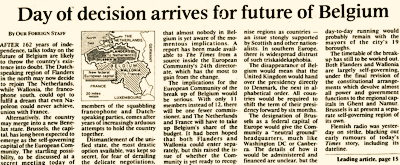April 1, 1993: Dave Rickards, a DJ at KGB-FM in San Diego, announced that the space shuttle Discovery had been diverted from Edwards Air Force Base and would soon be landing at Montgomery Field, a small airport in the suburbs of San Diego. Thousands of commuters immediately headed towards the location — cameras, camcorders, and folding chairs in hand — hoping to witness the landing. So many people showed up that traffic was brought to a standstill, requiring the police to start directing cars away from the airport. Of course, there were some clues that the announcement was a hoax. For instance, Montgomery Field is too small for large aircraft to land there, let alone a space shuttle. Also, there wasn't a shuttle in orbit at the time. The police weren't amused by the prank. They made it known that they would be billing the radio station for the cost of forcing officers to direct traffic.







The Top 100 April Fool's Day Hoaxes of All Time
Other April Fool resources at the Museum include: the April Fool Archive (a year-by-year archive of the entire history of the celebration), the Origin of April Fool's Day, the April Fool FAQ, and the Top 10 Worst April Fools Ever. Also, you can find more info about most of the hoaxes in the Top 100 list by clicking their title or thumbnail.